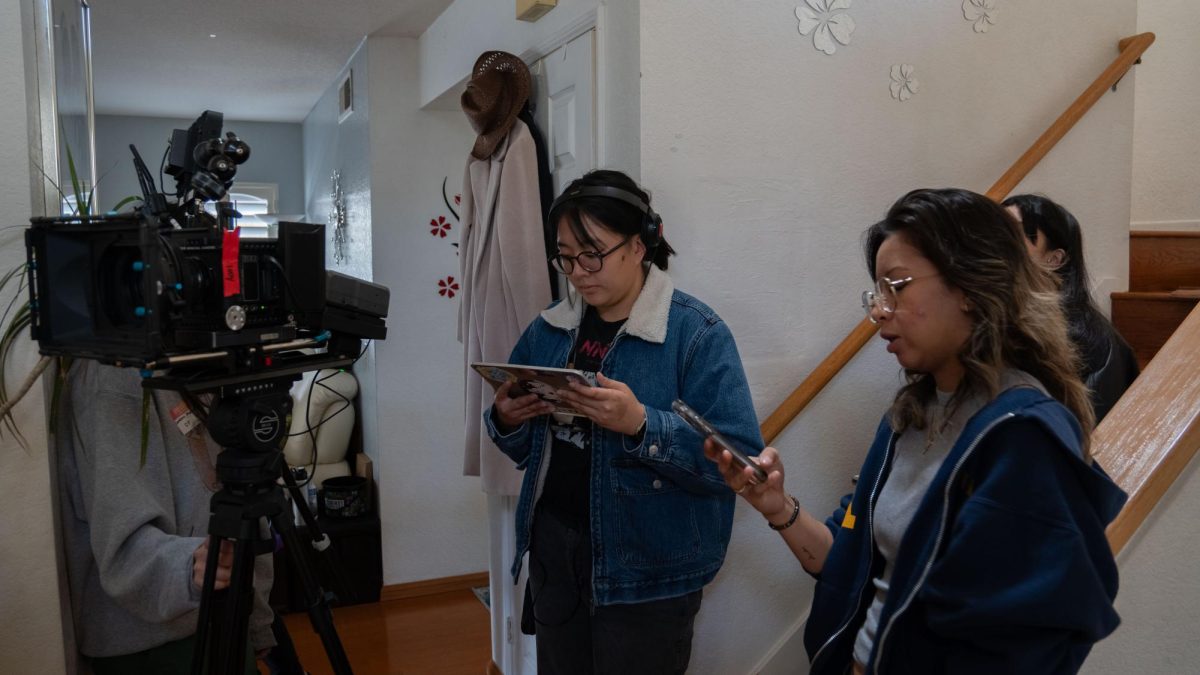In a series of several meetings in the spring of 2002, the original teachers and staff of Westview met in then-English teacher Cathi Dow’s basement to discuss what day-to-day life, including Homeroom at Westview, would be like.
From these meetings, they drafted a report entitled “Westview: It’s All About Learning” describing conclusions reached in the meetings.
“An important aspect of student success in school is the ability to make connections between peers, staff, and the school community,” the report reads. “At Westview, the Homeroom will provide a vehicle for such connections. A student’s four-year Homeroom experience will consist of a staff member and 20 students, with five students from each grade level.”
As Westview updates the bell schedule, teachers and administrators are discussing how to revamp Homeroom.
Math teacher Bruce Hubschmitt said that Homeroom’s disconnection from other academic aspects of school makes it a vector for connection like what is described in the report.
“It provides an opportunity for teachers to connect with kids in a way that does not have a grade attached to it,” Hubschmitt said. “Most of the time I just wander around and check on kids and talk to them.”
Some Homeroom teachers said that their ability to make these connections is hampered due to the reduction of Homeroom from three days a week to two during the 2022-2023 school year. Teacher librarian Cheri Tomboc-Brownlie is one of them.
“In January, I only saw [my students] two times because of all these minimum-day Fridays and the Monday holidays,” Tomboc-Brownlie said.
Aside from losing her connection with students, Tomboc-Brownlie said she’s also lacked a connection with their parents. Before the current attendance office existed, Homeroom was the place where student absences would be cleared from the attendance system. Parents would have to call Homeroom teachers to clear absences, allowing teachers to have another reach into their students’ lives.
“Parents used to call me and tell me what was going on and sometimes we would just have a conversation and I kind of miss that,” Tomboc-Brownlie said. “I miss the talking to the family part of [being a Homeroom teacher] because I think that [allowed for another connection point to my students]. I knew what was going on at home because parents had to call me.”
Despite losing her connection to students’ parents Tomboc-Brownlie still tries to create a family-like atmosphere for her students, where she sends each of her students birthday cards and gives each of them a lei at graduation.
Because of Westview’s policy of placing siblings together in the same Homerooms, Tomboc-Brownlie has had some families in her Homeroom for 9 years.
Math teacher Katherine Bell strives to bond directly with her students but says her ability to do this has become more difficult in recent years with reduced Homeroom days.
“There used to be a lot more touches of where we were involved with what students were doing,” Bell said. “[For] some of my Homeroom students I have walked up to the counseling office [with them] because they need help to change a class or I facilitated conversations. [But because of Homeroom being only twice a week,] I think that every time [there is a gap] it takes a while to build that trust up again because it’s rare that I see them four [consecutive Mondays and Fridays] in a row.”
Bell said that she thinks Homeroom is not utilized effectively, and that the ineffectivenes is a consequence of the pandemic.
“We don’t really use Homeroom to facilitate anything, and the connections between peers and teachers in Homeroom have suffered,” Bell said. “ When we returned to campus, we were wearing masks and had lost the traditions and purpose of homeroom. I feel that sometimes students don’t see a value in it because we don’t actually facilitate relationships or disperse information. I only have 24 kids in my Homeroom, which allows me to talk to kids and interact with them in a different way, but we don’t use that and we don’t take advantage of it. It’s dissapointing.”
Despite this, Bell tries to forge connections between her Homeroom students by having them play dodgeball and cards in groups based on their tables in class, which have one person from each grade level in them. Bell’s Homeroom received some of the equipment that they use for recreational activities from the PTSA’s Mental Wellness and Connections Committee (MWC).
MWC chair Christie Papworth and others on the committee realized that something needed to change regarding Homeroom after learning that students were idling away their time as opposed to making Homeroom the connection-making time it was originally meant to be.
To help facilitate these connections, the committee talked to some of the teachers who were very involved with their Homerooms before COVID but said that the chance to make connections had been lost.
“I think a lot of students aren’t realizing what they’re missing if they don’t have that connection time,” Papworth said. “[If they could just] see Mrs. Bell’s Homeroom class, and how animated they are, and how happy they are when they get to go outside and play games like Foursquare, then I think students would want to try to make connections. The more connections we can make, the better our lives are, is what our committee believes.”
Papworth said she believes that Homeroom would improve if there was more commubication to inform teachers on how they could make the most of their Homeroom time.
“[Homeroom would improve if teachers were given an] overview of topics for conversation and games,” Papworth said. “We want to help guide them to some fun conversations with their students. Give them the games to play with students.”
Current students never experienced a pre-COVID Homeroom. As such, some do not understand its purpose. Ryan Bui (11) is one of them.
“I feel like we don’t really do much in Homeroom,” Bui said. “All we do is sit around and sometimes watch the newscast or read the newspaper, and occasionally we are given some forms or surveys to fill out. But most of the time we just sit around. I am glad that Homeroom is only twice a week now because I find Wolverine Time more helpful to be able to talk to people and get help from teachers.”
Bui doesn’t see Homeroom as being the connection-fostering place that it was originally intended to be.
“I believe the purpose is to give students any information they need like what is going around in school through the news and other things,” Bui said. “That’s about it; that’s all I see it as.”
Although students and teachers over time have come to see Homeroom in different lights, Tomboc-Brownlie said she still believes Homeroom is something worth keeping around, and something that is valuable to campus culture. It makes Westview particularly unique because other high schools like Mt. Carmel and Rancho Bernardo don’t have Homeroom.
“I really hope that Homeroom never goes away at Westview,” Tomboc-Brownlie said. “I think it’s something that makes Westview special.”





